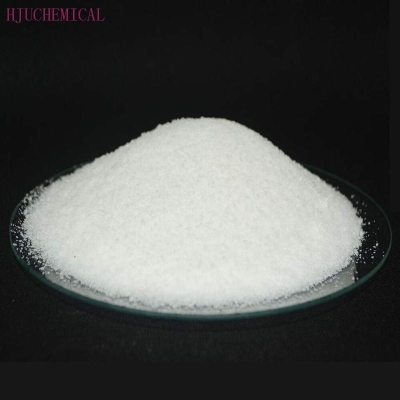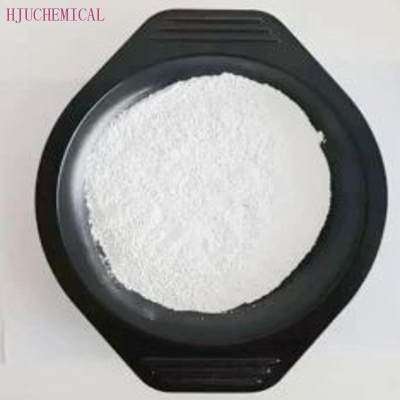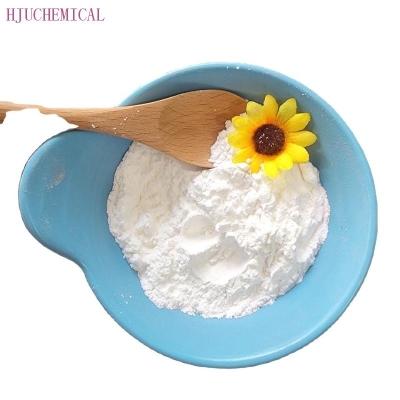-
Categories
-
Pharmaceutical Intermediates
-
Active Pharmaceutical Ingredients
-
Food Additives
- Industrial Coatings
- Agrochemicals
- Dyes and Pigments
- Surfactant
- Flavors and Fragrances
- Chemical Reagents
- Catalyst and Auxiliary
- Natural Products
- Inorganic Chemistry
-
Organic Chemistry
-
Biochemical Engineering
- Analytical Chemistry
- Cosmetic Ingredient
-
Pharmaceutical Intermediates
Promotion
ECHEMI Mall
Wholesale
Weekly Price
Exhibition
News
-
Trade Service
On March 2, China Petroleum & Chemical Corporation announced that during the "13th Five-Year Plan" period, it will invest 200 billion yuan to build four world-class refining and chemical bases in Maozhan, Zhenhai, Shanghai and Nanjing
.
After completion, the four major bases will have an annual oil refining capacity of 130 million tons, accounting for 45% of Sinopec’s production capacity and 17% of the country’s total production capacity; ethylene production capacity will reach 9 million tons, accounting for 65% of Sinopec’s production capacity and 31% of the country’s total production capacity
.
Leading the transformation and upgrading of the industry On an open area on the East Island of Zhanjiang City, large cranes shuttle back and forth.
This is the construction site of Zhongke Refinery.
Construction started on December 20 last year and is expected to be completed in 2019
.
By then, it will form an integrated base with Maoming Petrochemical, reaching an annual refining capacity of 35 million tons and 1.
8 million tons of ethylene
.
"Only when scale is formed can we be competitive," said Wang Yupu, chairman of Sinopec Group Corporation.
The significant trend of the world's petrochemical industry is scale and clustering
.
Compared with the petrochemical powers, China's petrochemical industry is far from large-scale and clustered
.
Data show that 52% of the U.
S.
refining capacity and 95% of the ethylene capacity are concentrated in the Gulf Coast; 85% of the refining capacity and 89% of the ethylene capacity in Japan are located in the Pacific Coast
.
South Korea’s Ulsan has an annual refining capacity of 42 million tons and an ethylene capacity of 3.
4 million tons; Singapore’s Jurong has an annual refining capacity of 67.
32 million tons and an ethylene capacity of 3.
87 million tons
.
A stark example is that Zhenhai Refining & Chemical is the number one refining and chemical company in China, with an annual refining capacity of 23 million tons
.
However, among the companies with an annual refining capacity of more than 20 million tons, Zhenhai Refining & Chemical only ranks 18th
.
This is the fact that China's refining and chemical industry has long been a reality with a large number of enterprises, a small scale, and an unreasonable industrial layout
.
There are currently more than 240 oil refining companies in China.
Except for the 4 provinces, autonomous regions, and municipalities in Tibet, Guizhou, Jinzhou and Chongqing, all other provinces, autonomous regions and municipalities have refineries.
The average annual output is only 3.
08 million tons, which is far below the world average of 7.
42 million tons.
.
In 2016, the profit of China's oil refining industry exceeded 170 billion yuan, an increase of more than 120%
.
However, the overall size of the refining industry is not strong, the utilization rate of equipment is low, and the problems of overcapacity cannot be ignored.
.
The prominent problem in the chemical industry is the structural surplus of the industry, which is manifested in "crowding at the low end and shortage at the high end"
.
For example, the import of new chemical materials is highly dependent, and high-end products such as engineering plastics, special rubbers, and electronic chemicals still need to be imported in large quantities
.
At the same time, the overcapacity of low-end products such as calcium carbide, caustic soda, phosphate fertilizer, and nitrogen fertilizer is very obvious
.
Wang Yupu said that Sinopec will adjust the industrial structure within the group to increase refining capacity while shutting down old factories to ensure that the total refining capacity does not increase, so as to promote supply-side structural reforms, lead industrial transformation and upgrading, and move towards mid-to-high end as a whole
.
Integration brings maximum benefits.
The integration of refining and chemical industry is a major trend in the development of the world's petrochemical industry.
Because the refining and chemical industry has a long chain and high correlation, there are many optimization possibilities between the use of materials and energy, and crude oil can be fully utilized.
Resources to maximize benefits
.
The first optimization is the crude oil import link
.
Take the Maozhan integrated base as an example.
Zhanjiang has a large port.
Maoming Petrochemical and Zhongke Refinery in Zhanjiang can coordinate and optimize the crude oil import link.
Mastering the right buying point has a great impact on efficiency
.
Secondly, the optimal allocation of resources can be realized
.
"Using naphtha as a raw material for ethylene is not competitive when oil prices are high.
Zhongke Refinery can use other components to produce ethylene
.
At low oil prices, it can switch to using naphtha as a raw material
.
" Sinopec Maozhan Refining Yu Xizhi, head of the leading group for chemical integration, said that through optimized configuration, the two companies can achieve differentiation and complementarity, regardless of whether the oil price is high or low, they can achieve better benefits
.
Product structure can also be better optimized under integration
.
In the refining branch of Guangdong Maoming Petrochemical, there is the largest refining control room in the country
.
"This central control room manages 38 sets of plants with a refining capacity of 18 million tons
.
But in the past, each plant had to have a control room
.
" said Dong Wei, director of the Sinopec Maozhan Refining and Chemical Integration Leading Group Office
.
Last year, this refining division increased the efficiency by 370 million yuan by increasing the production of gasoline, jet fuel and high-grade asphalt.
.
The Zhongke Refinery under construction will mainly produce mid-to-high-end chemical products such as "National VI" gasoline, diesel and aviation kerosene, especially gasoline and aviation kerosene that are marketable in the prolific market
.
In addition, human resources can be fully optimized
.
It is understood that the four major refining and chemical bases that Sinopec is building are mainly upgraded.
Among them, the Maozhan base will have an annual refining capacity of 35 million tons and an ethylene capacity of 1.
8 million tons; the Zhenhai Refining and Chemical Base will have a refining capacity of 33 million tons to 3800.
The Shanghai base will have an annual oil refining capacity of 26 million tons and an ethylene capacity of 2.
59 million tons; the Nanjing base will have an annual oil refining capacity of 36 million tons and an ethylene capacity of 2.
4 million tons
.
Reducing the dependence on imports of high-end products At present, the world's petrochemical industry is developing in the direction of refinement and specialization.
After hundreds of years of growth, the chemical industries of developed countries have occupied a large market share of high-end products, and China is regarded as a very important market
.
Dai Yingliang, director of Sinopec's development planning department, said that the principle of base development is to control oil refining capacity, meet the requirements of oil quality upgrades, produce more chemical raw materials, optimize product structure, improve quality and efficiency, and move toward mid-to-high end
.
This will help China's high-end chemical products expand market share and reduce import dependence
.
In 2016, China’s petrochemical industry had a trade deficit of US$136 billion.
The self-sufficiency rate of some high-end chemical products was less than 40%, and some products were even more dependent on foreign sources than 50%
.
In the highly anticipated new chemical material field, it is characterized by high technological content, high added value, and high degree of dependence on foreign countries, with a low self-sufficiency rate of domestic products and a large gap in market demand
.
At the same time, while the oil refining industry is becoming large-scale and clustered in China, it is expected to go abroad in the future to build new refineries abroad and build new Chinese-made brands
.
In January 2016, Sinopec’s first overseas refining and chemical project Yanbu Refinery was officially put into operation, which may be a new vane
.
.
After completion, the four major bases will have an annual oil refining capacity of 130 million tons, accounting for 45% of Sinopec’s production capacity and 17% of the country’s total production capacity; ethylene production capacity will reach 9 million tons, accounting for 65% of Sinopec’s production capacity and 31% of the country’s total production capacity
.
Leading the transformation and upgrading of the industry On an open area on the East Island of Zhanjiang City, large cranes shuttle back and forth.
This is the construction site of Zhongke Refinery.
Construction started on December 20 last year and is expected to be completed in 2019
.
By then, it will form an integrated base with Maoming Petrochemical, reaching an annual refining capacity of 35 million tons and 1.
8 million tons of ethylene
.
"Only when scale is formed can we be competitive," said Wang Yupu, chairman of Sinopec Group Corporation.
The significant trend of the world's petrochemical industry is scale and clustering
.
Compared with the petrochemical powers, China's petrochemical industry is far from large-scale and clustered
.
Data show that 52% of the U.
S.
refining capacity and 95% of the ethylene capacity are concentrated in the Gulf Coast; 85% of the refining capacity and 89% of the ethylene capacity in Japan are located in the Pacific Coast
.
South Korea’s Ulsan has an annual refining capacity of 42 million tons and an ethylene capacity of 3.
4 million tons; Singapore’s Jurong has an annual refining capacity of 67.
32 million tons and an ethylene capacity of 3.
87 million tons
.
A stark example is that Zhenhai Refining & Chemical is the number one refining and chemical company in China, with an annual refining capacity of 23 million tons
.
However, among the companies with an annual refining capacity of more than 20 million tons, Zhenhai Refining & Chemical only ranks 18th
.
This is the fact that China's refining and chemical industry has long been a reality with a large number of enterprises, a small scale, and an unreasonable industrial layout
.
There are currently more than 240 oil refining companies in China.
Except for the 4 provinces, autonomous regions, and municipalities in Tibet, Guizhou, Jinzhou and Chongqing, all other provinces, autonomous regions and municipalities have refineries.
The average annual output is only 3.
08 million tons, which is far below the world average of 7.
42 million tons.
.
In 2016, the profit of China's oil refining industry exceeded 170 billion yuan, an increase of more than 120%
.
However, the overall size of the refining industry is not strong, the utilization rate of equipment is low, and the problems of overcapacity cannot be ignored.
.
The prominent problem in the chemical industry is the structural surplus of the industry, which is manifested in "crowding at the low end and shortage at the high end"
.
For example, the import of new chemical materials is highly dependent, and high-end products such as engineering plastics, special rubbers, and electronic chemicals still need to be imported in large quantities
.
At the same time, the overcapacity of low-end products such as calcium carbide, caustic soda, phosphate fertilizer, and nitrogen fertilizer is very obvious
.
Wang Yupu said that Sinopec will adjust the industrial structure within the group to increase refining capacity while shutting down old factories to ensure that the total refining capacity does not increase, so as to promote supply-side structural reforms, lead industrial transformation and upgrading, and move towards mid-to-high end as a whole
.
Integration brings maximum benefits.
The integration of refining and chemical industry is a major trend in the development of the world's petrochemical industry.
Because the refining and chemical industry has a long chain and high correlation, there are many optimization possibilities between the use of materials and energy, and crude oil can be fully utilized.
Resources to maximize benefits
.
The first optimization is the crude oil import link
.
Take the Maozhan integrated base as an example.
Zhanjiang has a large port.
Maoming Petrochemical and Zhongke Refinery in Zhanjiang can coordinate and optimize the crude oil import link.
Mastering the right buying point has a great impact on efficiency
.
Secondly, the optimal allocation of resources can be realized
.
"Using naphtha as a raw material for ethylene is not competitive when oil prices are high.
Zhongke Refinery can use other components to produce ethylene
.
At low oil prices, it can switch to using naphtha as a raw material
.
" Sinopec Maozhan Refining Yu Xizhi, head of the leading group for chemical integration, said that through optimized configuration, the two companies can achieve differentiation and complementarity, regardless of whether the oil price is high or low, they can achieve better benefits
.
Product structure can also be better optimized under integration
.
In the refining branch of Guangdong Maoming Petrochemical, there is the largest refining control room in the country
.
"This central control room manages 38 sets of plants with a refining capacity of 18 million tons
.
But in the past, each plant had to have a control room
.
" said Dong Wei, director of the Sinopec Maozhan Refining and Chemical Integration Leading Group Office
.
Last year, this refining division increased the efficiency by 370 million yuan by increasing the production of gasoline, jet fuel and high-grade asphalt.
.
The Zhongke Refinery under construction will mainly produce mid-to-high-end chemical products such as "National VI" gasoline, diesel and aviation kerosene, especially gasoline and aviation kerosene that are marketable in the prolific market
.
In addition, human resources can be fully optimized
.
It is understood that the four major refining and chemical bases that Sinopec is building are mainly upgraded.
Among them, the Maozhan base will have an annual refining capacity of 35 million tons and an ethylene capacity of 1.
8 million tons; the Zhenhai Refining and Chemical Base will have a refining capacity of 33 million tons to 3800.
The Shanghai base will have an annual oil refining capacity of 26 million tons and an ethylene capacity of 2.
59 million tons; the Nanjing base will have an annual oil refining capacity of 36 million tons and an ethylene capacity of 2.
4 million tons
.
Reducing the dependence on imports of high-end products At present, the world's petrochemical industry is developing in the direction of refinement and specialization.
After hundreds of years of growth, the chemical industries of developed countries have occupied a large market share of high-end products, and China is regarded as a very important market
.
Dai Yingliang, director of Sinopec's development planning department, said that the principle of base development is to control oil refining capacity, meet the requirements of oil quality upgrades, produce more chemical raw materials, optimize product structure, improve quality and efficiency, and move toward mid-to-high end
.
This will help China's high-end chemical products expand market share and reduce import dependence
.
In 2016, China’s petrochemical industry had a trade deficit of US$136 billion.
The self-sufficiency rate of some high-end chemical products was less than 40%, and some products were even more dependent on foreign sources than 50%
.
In the highly anticipated new chemical material field, it is characterized by high technological content, high added value, and high degree of dependence on foreign countries, with a low self-sufficiency rate of domestic products and a large gap in market demand
.
At the same time, while the oil refining industry is becoming large-scale and clustered in China, it is expected to go abroad in the future to build new refineries abroad and build new Chinese-made brands
.
In January 2016, Sinopec’s first overseas refining and chemical project Yanbu Refinery was officially put into operation, which may be a new vane
.







